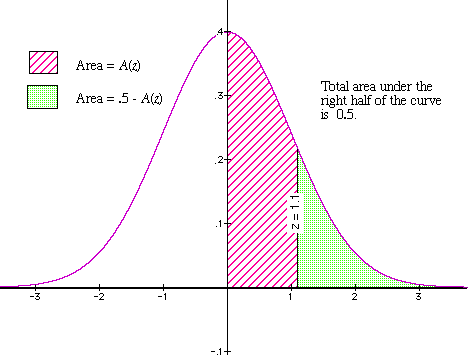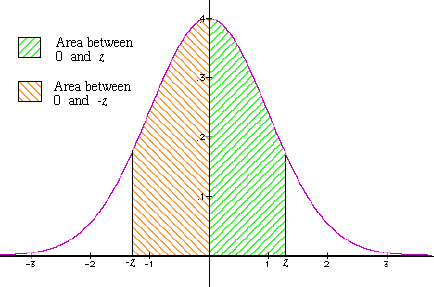Math 3118, Section 3
Spring 2001
Thursday, April 26 class handout
Class exercises
-
Exercises from the text:
-
Exercise 11.4.2
-
Exercise 11.4.3
-
Exercise 11.4.4
-
Exercise 11.4.6
-
Exercise 11.4.7
- Supplementary exercise #1
- One thousand left handed students and one thousand right handed students
took a test. For the left handed students, the mean score was 75, and for
the right handed students the mean score was 72.
- Assume that the standard deviation was 4 points for the left-handed students
and 6 points for the right-handed students. Determine how many left-handed
students and how many right-handed students had scores:
- 80 or above
- 85 or above
- 90 or above
- 70 or below
- 65 or below
- 60 or below
Suggestions: As in the exercises in the text, you need to
subtract the mean from the score in question (after shifting appropriately
by 1/2) and then divide by the standard deviation in order to get the
z-value.
For instance: If we're considering left-handed students,
then for scores of 80 or above we subtract the mean (=75) from 79.5 to get
a difference of 4.5 points. To find the z-value, we divide this difference
by the standard deviation (=4), obtaining 1.125 standard deviation units.
Thus, z is about 1.1.
Now, A(z) gives the area under the normal curve between
0 and z. We need the area under the curve which is
to the right of z, so we take note
of the fact that the total area under the right
half of the normal curve is .5 and proceed accordingly. (¿¿Should
we add or subtract??)

Homework due Tuesday, May 1
- Supplementary exercise #2
- As in supplementary exercise #1, we again consider a situation where one
thousand left handed students and one thousand right handed students took
a test. As before, the mean score for the left handed students was 75, and
for the right handed students the mean score was 72.
- This time, however, we assume that the standard deviation was 8 points
for the left-handed students and 4 points for the right-handed students.
Determine how many left-handed students and how many right-handed students
had scores:
- 80 or above
- 85 or above
- 90 or above
- 70 or below
- 65 or below
- 60 or below
Similar suggestions apply, as in supplementary exercise 1
above.
- Supplementary exercise #3
- Comment on the statement that "left-handed students usually scored higher
than right-handed students".
(A similar question is asked in exercise
11.3.2 in the text.) Use information from the supplementary class and
homework exercises to illustrate your answers.
- In particular, discuss how the answers on the homework exercise were
different from the answers on the class exercise. (For instance, the
differences might be more noticeable toward one or the other end of the scale.)
- =
Exercise 11.4.1 from the text
- =
Exercise 11.4.5 from the text
Note:In this exercise, the phrase "within z standard
deviation units of the mean" indicates that we are looking for a region that
includes areas on both sides of the mean. After finding
the value of A(z) ¿¿what else do we have to do in order to
find the desired area??

Back to:


